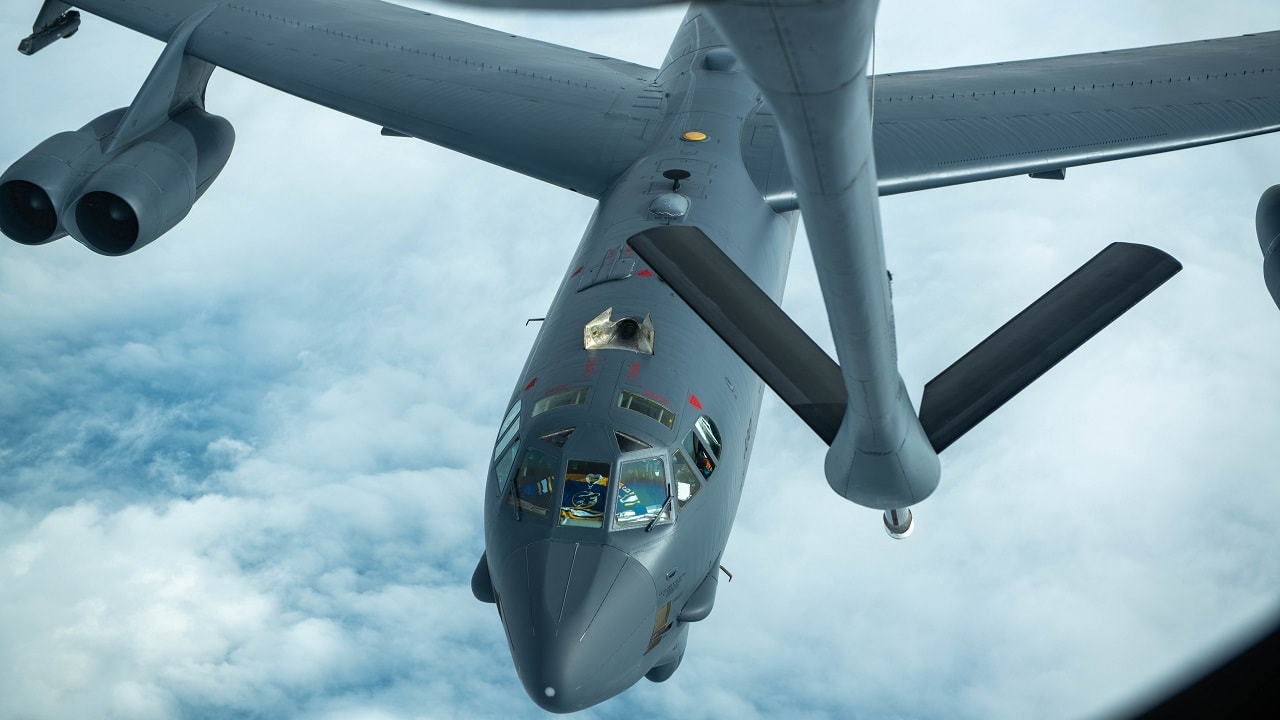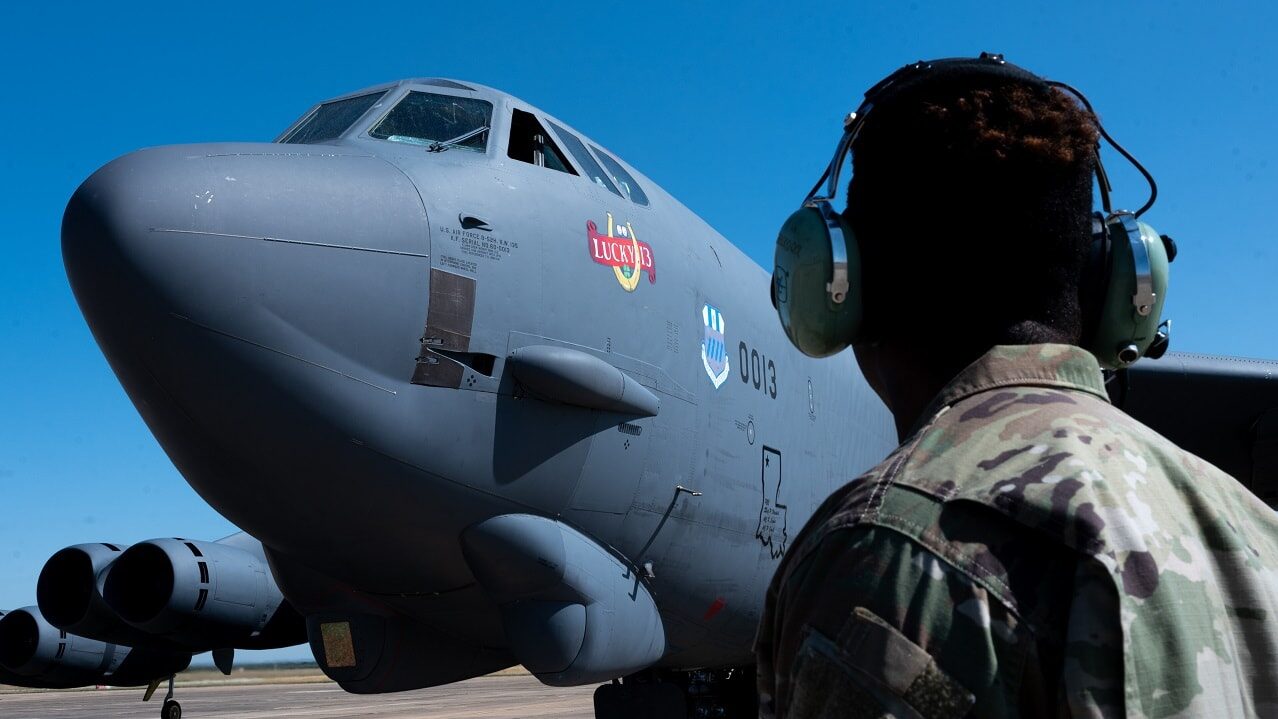Lasers, hypersonics, drone attacks, massive ordnance carriage, and long-range, nuclear-capable cruise missiles are just a few of the emerging elements woven into a new generation B-52 bomber, a modern variant of the classic, Vietnam-era weapon now surging beyond 50 years of continued service.
Weapons upgrades to the B-52 have been underway for many years, and breakthrough progress has been made within the last 10 years. One of the most significant and potentially impactful upgrades involves a large re-configuration of the aircraft’s weapons-carrying capability called the 1760 Internal Weapons Bay Upgrade (IBWU).
The new weapons bay is a centerpiece of the emerging B-52J variant of the aircraft, which will surge that aircraft into the 2030s and beyond. The IBWU will enable the aircraft to carry up to eight of the newest “J-series” bombs in addition to carrying six pylons under each wing. IWBU uses a digital interface and a rotary launcher to increase the weapons payload, service officials told Warrior Maven years ago.
“The B-52 1760 Internal Weapons Bay Upgrade provides internal J-series (smart) weapons capability through modification of Common Strategic Rotary Launchers and upgrade of aircraft software,” an Air Force spokeswoman told me as far back as 2018.
Sixty-Six Percent Increase
The B-52 has previously been able to carry JDAM weapons externally. Still, with the IWBU, the aircraft will be able to internally house some of the most cutting-edge precision-guided Joint Direct Attack Munitions and Joint Air-to-Surface Standoff Missiles, among others.
Overall, the IWBU effort will bring a 66 percent increase in carriage capability for the B-52. The IWBU also allows for increased fuel efficiency by removing bombs from beneath the wings and reducing drag.
The first increment of IWBU integrates an internal weapons bay’s ability to fire a laser-guided JDAM. A second increment integrates more modern or cutting-edge weapons such as the Joint Air-to-Surface Standoff Missile, or JASSM, JASSM Extended Range (ER), and a technology called Miniature Air Launched Decoy, or MALD. A MALD-J “jammer” variant, which will also be integrated into the B-52, can jam enemy radar technologies.
In recent years, engineers have been equipping all of the Air Force B-52s with digital data links, moving-map displays, next-generation avionics, new radios, and an ability to carry more weapons internally and integrate new, high-tech weapons as they emerge.
For example, In 2021, the Air Force shot the AGM-183 Air-Launched Rapid Response Weapon, a hypersonic weapon with enhanced targeting data from sensors from 1,000 miles away.
The B-52 has been a nuclear-capable aircraft since the beginning of the nuclear age, yet more recent innovations will significantly improve its nuclear capacity. The aircraft will travel with the now-in-development Long-Range Standoff weapon, a nuclear-capable, dual-use cruise missile in development for the future.
There will also be an upgraded variant of the well-known B-61 nuclear bomb integrated into the aircraft called the B-61 Mod 12; this variant essentially consolidates multiple existing variants into a single weapon capable of area blasts, penetrating attack, and varying yield capacity.

A U.S. Air Force 5th Bomb Wing B-52 Stratofortress approaches a U.S. Air Force KC-135 Stratotanker, assigned to the 909th Air Refueling Squadron, to perform aerial refueling over the Pacific Ocean, Oct. 27, 2022. Aerial refueling allows friendly aircraft to continue their mission without needing to return to the base for fuel. (U.S. Air Force photo by Airman Alexis Redin).
Given all this, the question becomes whether there is a limit to how much the B-52 can be upgraded. Is there a point when the massively upgraded bomber will ultimately become obsolete? If the airframes remain viable or can be reinforced, the answer may be a “very long time.”
Today’s B-52 is entirely different from the 1960s platform, which primarily dropped unguided or “dumb” bombs across vast swaths of territory and even “carpet bombed” certain critical areas.
“Mother Ship” B-52
Today’s B-52 can fire nuclear weapons, long-range cruise missiles, precision-guided bombs, and function as an air-mobile “bomb truck” arsenal plane of sorts. The largest and potentially most impactful innovation of great consequence to the B-52 may be its growing ability to focus as a drone-launching “mother ship,” meaning a platform able to launch and recover drones from the air.
This enables multi-node forward reconnaissance operations and an ability to test enemy air defenses, blanket areas with ISR, paint or find targets for other aircraft, and even deliver weapons when directed by a human.

A U.S. Air Force maintainer conducts a visual inspection of a B-52H Stratofortress at Morón Air Base, Spain in support of Bomber Task Force 21-3, May 24, 2021. Strategic bomber missions enhance the readiness and training necessary to respond to any potential crisis or challenge across the globe. (U.S. Air Force photo by Staff Sgt. Jason Allred)
Non-Stealthy B-52
As for a B-52’s limitations, one might simply consider its potential vulnerability. As a large, visible, “non-stealthy” aircraft easily found by enemy weapons systems, the B-52 is certainly not well positioned to thrive in what Air Force leaders describe as a “contested” environment, as it might easily fall prey to enemy air defenses or other enemy weapons.
This is why the ability to launch drones, engage in long-range multi-node mesh networking, and deliver massive amounts of ordnance once cleared above a hostile area become critical to the longevity and continued relevance of the B-52.
Should a B-52 be able to launch and operate small numbers of drones from safe standoff distances, deliver long-range precision weaponry from beyond the range of enemy attack, or provide massive amounts of lethal, devastating bomb attacks over an area once air supremacy is established ….. The B-52 may well fly for decades more into the future.
About the Author: Defense Expert Kris Osborn
Kris Osborn is the Military Technology Editor of 19FortyFive and President of Warrior Maven – Center for Military Modernization. Osborn previously served at the Pentagon as a highly qualified expert in the Office of the Assistant Secretary of the Army—Acquisition, Logistics & Technology. Osborn has also worked as an anchor and on-air military specialist at national TV networks. He has appeared as a guest military expert on Fox News, MSNBC, The Military Channel, and The History Channel. He also has a Masters Degree in Comparative Literature from Columbia University.

